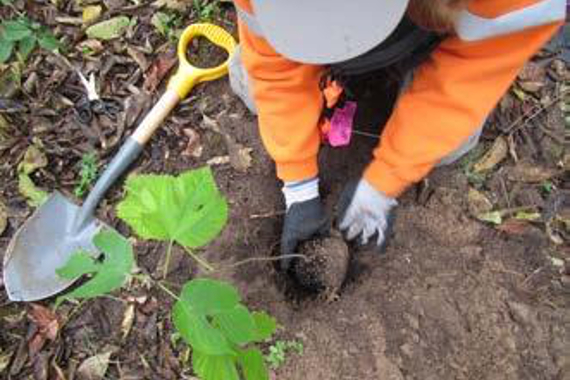
Red mulberry seedlings in a local greenhouse following an experiment to produce genetically pure offspring. Photo: © Vic and Darlene Bernky/ © Native Trees and Plants
Diversifying diluted genes
Using conservation genetics to save trees in Point Pelee National ParkFootnote *
What’s the issue?

Point Pelee National Park is home to some of the rarest species of trees in Canada: blue ash, butternut, red mulberry and Kentucky coffee-tree, to name a few. So uncommon are they that their genetic makeup has become a treasured liability. Without a diverse set of genes, species are susceptible to a multitude of stressors like exotic diseases, insect infestation or hybridization. The invasive and more common white mulberry, for example, is threatening the long-term survival of the native and less common red mulberry through its ability to hybridize and gradually dilute successive generations of red mulberry. With less than 20 trees remaining, the race is on for park staff to locate and save the remaining true genetic specimens – individuals that hold the promise of species survival.
What’s our approach?
- Collaborate with other government and academic partners to research techniques for identifying and conserving the desired genetic strains of rare trees.
- Use controlled pollination, seed collection and propagation to increase the population of at-risk trees.
- Remove at least 90 percent of hybrid or non-native plants that are preventing rare trees from reproducing.
- Plant seedlings of greenhouse-propagated pure genetic stock in the park.
- Monitor the status of trees and adapt management strategies as new information is learned.
- Teach visitors and Canadians about the genetic conservation tools being used to identify and protect trees.
What’s been accomplished?
- Worked with partners to identify and conserve rare trees – including the Forest Gene Conservation Association, Agriculture and Agri-food Canada, Trent University and Natural Resources Canada’s National Tree Seed Centre.
- Propagated genetically pure, healthy strains of red mulberry and butternut in local greenhouses.
- Cleared 3.6 hectares of non-native species around 18 red mulberry trees; planted 26 genetically pure red mulberry seedlings.
- Educated Canadians via an exhibit on display in the park’s Visitor Center and national, local and social media stories.
- Date modified :